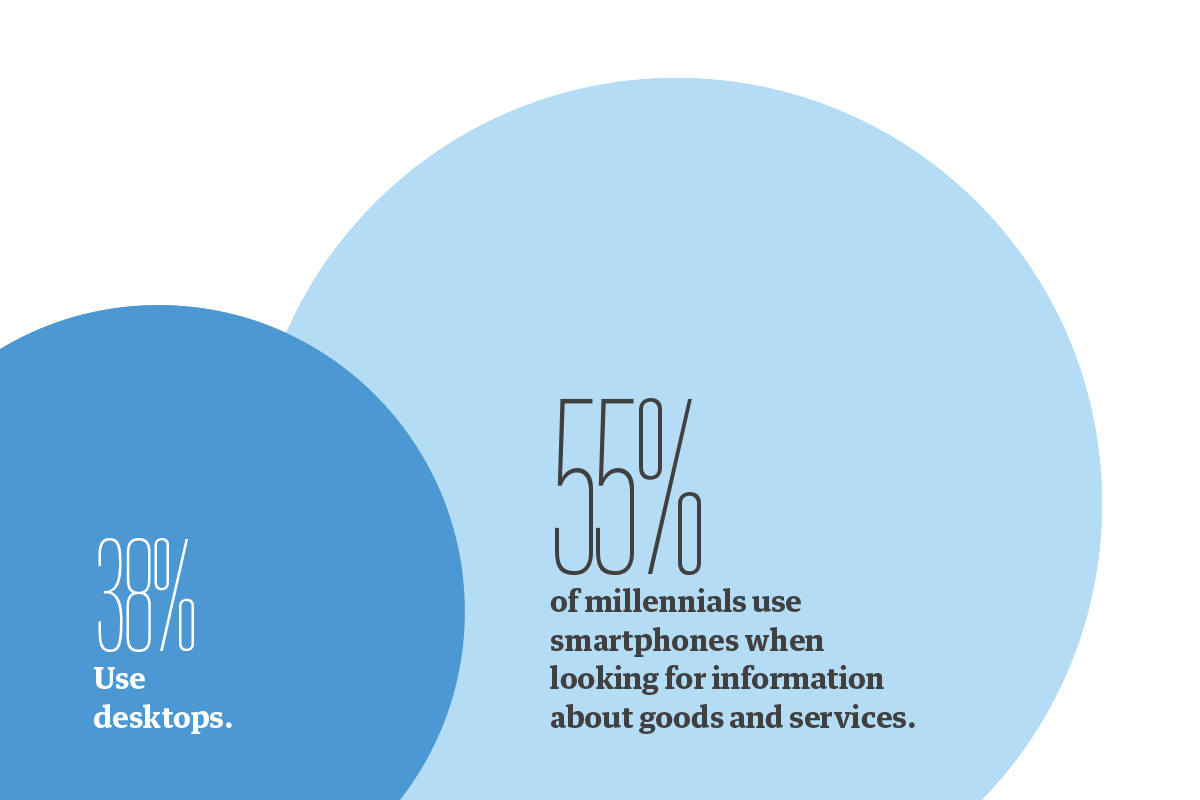The future of retail

The future of retail
This year Future Report and Inizio investigate digital shopping habits among millennials in Sweden, France and Spain. Turns out webrooming has been a bit overestimated.
Traditional retail is going through rapid change. Online, offline, logistics and data are about to be integrated, fueled by tech like location data and augmented reality (AR). Jack Ma, former CEO of Alibaba, coined the term “New Retail” to describe this future of commerce. In this year’s edition of Future Report we explore the field in a survey among millennials in Sweden, Spain and France. We find that the mobile phone is the obvious way of shopping. About half prefer the mobile when they search for information about a service or a product.
55 percent of millennials in France, Sweden and Spain prefer to use smartphones when looking for information about goods and services.
Voice is a technology well-placed to develop. A quarter of millennials in Spain use it but only a few in Sweden. Sweden is lagging behind when it comes to launching devices, probably because the language is small. Many say they plan to buy a device, so the user base will grow. There is a considerable user base on mobiles too, another path to unlock voice commerce. Overall, how fast this field will develop should depend on how companies like Amazon and Alibaba, having their Echo and Genie hardware to draw upon, will choose to focus their business. Social commerce describes different online collaborative shopping tools in social media such as user ratings, recommendations or sponsored content by friends or influencers. The potential has been widely discussed and it is most widely spread in Spain, where 71 percent have bought something based on this, compared to 58 percent in France and 47 percent in Sweden.
Webrooming and showrooming have been debated a lot. Showrooming can be defined as a shopper visiting a store to check out a product but then purchasing the product online. Webrooming is when a shopper researches products online but buys it in a store. Our survey shows that webrooming seems to be a stronger trend, even though a lot of shopping is happening exclusively online among millennials. We are still surprised to see that shopping in stores is still going strong, not only for consumable products. Not every retail category is as likely to see a jump in changing behavior.
Here’s more insights from the survey: Insight story – full report
Trends in Brief

Trends in Brief
With new tech like augmented reality, virtual reality and voice, the big question is always; how do we monetize this? For visual search, it’s another story.
Visual search can boost your sales
With new tech like augmented reality, virtual reality and voice, the big question is always; how do we monetize this? For visual search, it’s another story. Before the tech even became a big phenomenon, e-commerce companies were already finding multiple ways to boost sales with it. Earlier this year, Amazon and Snapchat announced a partnership where users could take a photo of an item they liked in Snapchat and find it on Amazon right away. Ebay has similar tech and of course, Google is adding it as well. The latter has been using visual search for years to help people find similar looking pictures. In the coming years, the focus will be on increasing the tech’s accuracy and finding even more ways to guide users to purchases.
“Retail has always been a theater”
The experience economy is growing. The term refers to businesses incorporating experiential components into their offerings. One example is the Museum of Ice Cream in San Fransico. At the fake museum/pop-up store, visitors can pose in Instagram-friendly ice cream-themed installations after paying up to 38 USD per ticket. Critics call it a brain-dead funhouse, but the concept store is doing well. Over 1 million people have visited it so far. The Museum of Ice Cream has built a strong brand and is capitalizing on it through a nationwide merchandise partnership with Target. “Retail has always been a form of theater, of staging and storytelling, with products as cast members”, Target’s chief creative officer tells Bloomberg.
The (not so) sharing economy
Last year, the sharing economy was praised as the solution to all our sustainability anxiety. Well, that might not be true. Even though the ideas and visions are nice, the sharing economy is up against some pretty big roadblocks.First off, investors are more eager than consumers. Rewiring people to prefer sharing over owning will take some time. Secondly, the people who actually use the sharing services are not handling it that well. Consumers don’t return what they borrowed, treat it poorly, and ignore direction for usage. In San Francisco, electronic scooters you rent with an app became an over-night success. However, people immediately started putting them anywhere when they were done, creating a mayhem for other commuters, and soon they were banned.
Ellen Montén